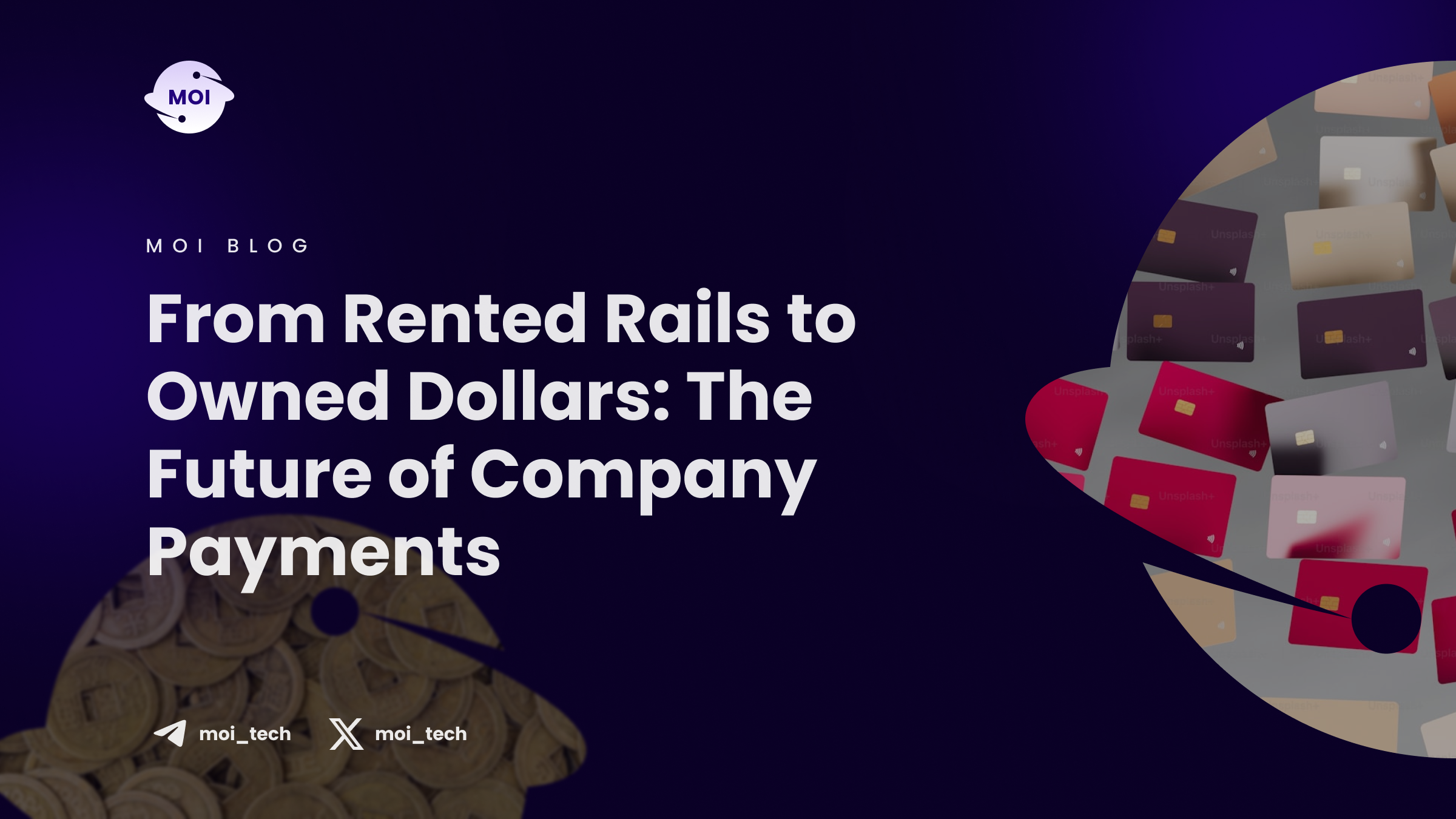In the traditional Web2 world, payments run on rails you don’t own. Every swipe of a credit card, every tap of a phone, routes through Visa, Stripe, or PayPal. They do the processing, and they take their cut. Three to four percent might look small on paper, but at scale this can be brutal. A coffee chain doing one hundred million in yearly sales is handing over millions just for the privilege of charging its own customers. An e-commerce giant bleeds a fortune on every purchase. Even ride-sharing apps are effectively giving away entire fleets of cars each year just to keep money moving.
This is the reality of Web2: rented payment rails. You build the business, they collect the toll.
MOI is uniquely positioned to change this. Instead of paying rent to middlemen, companies will be able to spin up their own digital dollars on MOI’s network. These are not loyalty points dressed up in blockchain clothing. They are safe, programmable, participant-owned assets that settle instantly, cost a fraction to run, and protect value by keeping it out of pooled contracts.
Why Rented Rails Are a Bad Deal
Legacy payments were built for a world that does not exist anymore. Picture grandma mailing a paper check to pay the electric bill, carefully licking the stamp and dropping it in the mailbox, hoping it clears before the lights go out. Or imagine swiping a plastic card through a chunky machine at the corner grocery, waiting for the dial-up modem to screech its way through a connection. That is the DNA of the system we are still using today.
The problem is we no longer live in that world. Today people tap their phone for coffee before their morning meeting, subscribe to half a dozen streaming services with one click, and buy sneakers from across the world that arrive in two days. A gamer in New York might buy digital armor at midnight from a company in Tokyo, and the payment still crawls through the same old system designed for paper checks and landline card readers.
The result is a system weighed down by fees, slowed by outdated settlement, and blind to context. A five-dollar latte and a five thousand dollar television are treated exactly the same. And when crypto tried to improve things, it copied the same mistakes. Most stablecoins are dumped into giant shared contracts that double as hacker buffets. Billions have been stolen because everyone’s money ends up in the same pot. Web2 or Web3, the ending is the same. Businesses rent the rails, and someone else eats their lunch.
The Future of Payments, Powered by MOI
Imagine if every company could mint its own money. Not monopoly money, not loyalty points you forget in an app drawer, but a true digital dollar that powers its business like electricity. That is the vision MOI is building toward.
Take a coffee chain. Right now, every cappuccino is taxed by American Express before it even hits the cash register. With MOI, the chain spins up its own coffee dollar. Customers buy with it, and every cup they drink loops value back into the brand’s economy instead of leaking out. Buy four lattes, and the fifth appears automatically because the network itself remembers your history. No punch cards, no gimmicks, just programmable money.
Or picture a sports league. Today, tickets, concessions, and jerseys are three separate payment headaches. With MOI, the league issues a league dollar. Fans use it for everything, from hot dogs to hoodies, and the value stays inside the league’s ecosystem. Every payment settles instantly, loyalty rewards are built right in, and the millions once lost to processors now fuel the league’s own growth.
Even e-commerce giants win. Imagine a marketplace where every checkout runs on its own branded currency. Instead of losing three percent on every sale to Stripe, the company runs its rails at half a percent on MOI. That is millions saved, customers rewarded, and value circulating inside the business instead of outside.
Why Only MOI Can Make This Real
It sounds simple: let every company mint its own digital dollar. But here’s the catch. On most blockchains, money does not live with you. It gets locked inside giant smart contracts, which are basically communal vaults. Those vaults are hacker magnets. Billions have already been drained because once a vault cracks, everyone’s funds spill out at once. MOI does it differently. Assets on MOI are native. That means your coffee dollar or league dollar stays in your pocket, not in a shared vault. If a hacker breaks into one wallet, they cannot drain the whole system. Safe DeFi means businesses can finally issue their own currencies without gambling on whether the vault holds.
Then there is context. Traditional payments treat a five-dollar latte the same as a five thousand dollar television. That is like having to go through airport security every time you want to buy a candy bar! On MOI, validation adapts. Four coffees on the way to work clear instantly. Buying an expensive TV triggers stronger checks, automatically. The network thinks about the transaction the same way a human cashier would.
And here is the kicker: MOI can offer this as a service. Instead of paying Visa four percent, companies can run their own rails for half a percent on MOI. That difference is millions back into the business. For a coffee chain, it means expansion. For a sports league, it means bigger fan rewards. For an e-commerce giant, it means reinvesting in growth instead of funding someone else’s network.
Only a thinking network like MOI makes all this possible. Assets that stay native and safe. Validation that adapts to the context. Privacy that protects by design. Costs that finally make sense. For companies that want to own their payments instead of renting them, MOI is not just an option…it is the only way forward.

